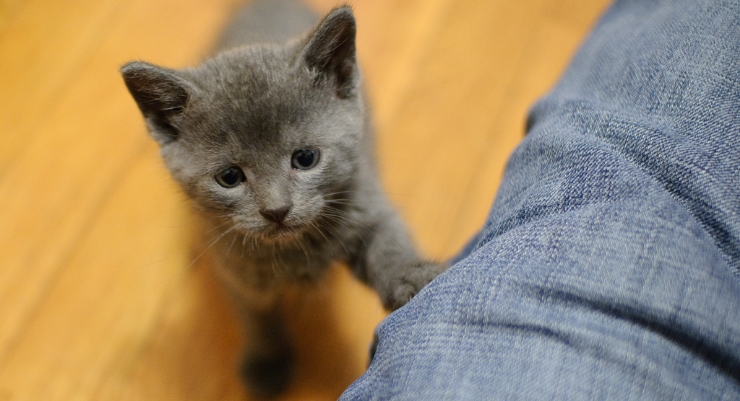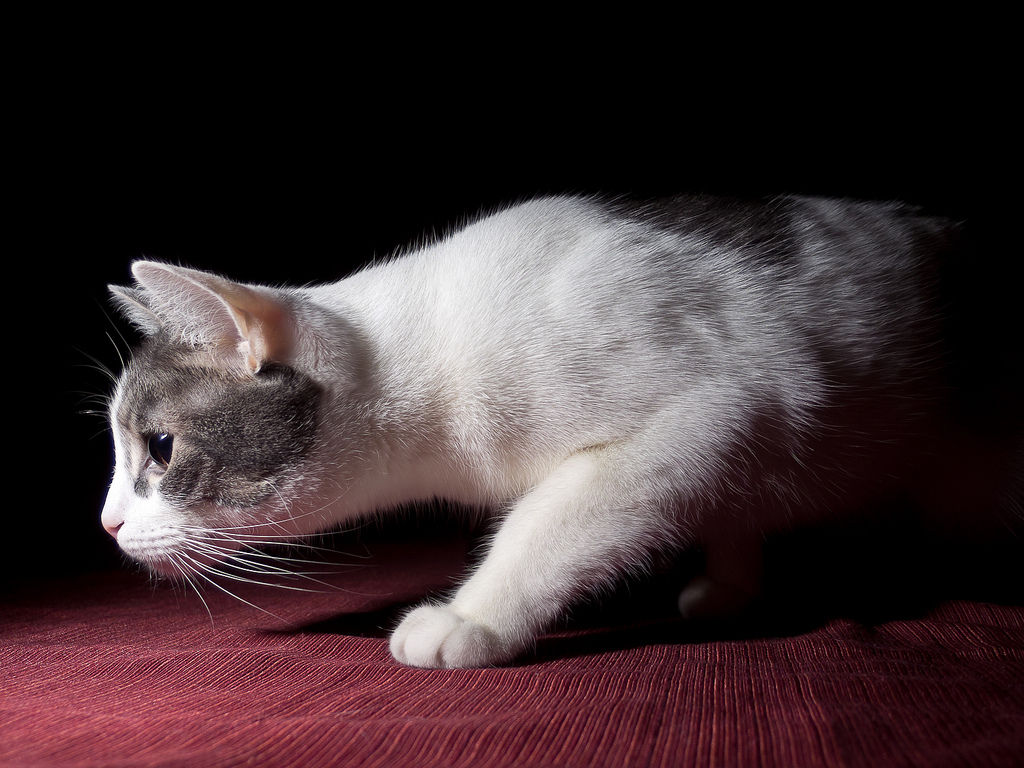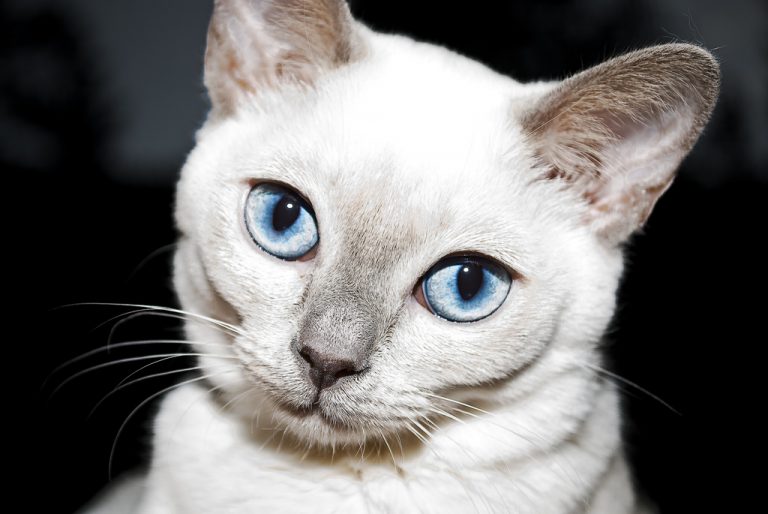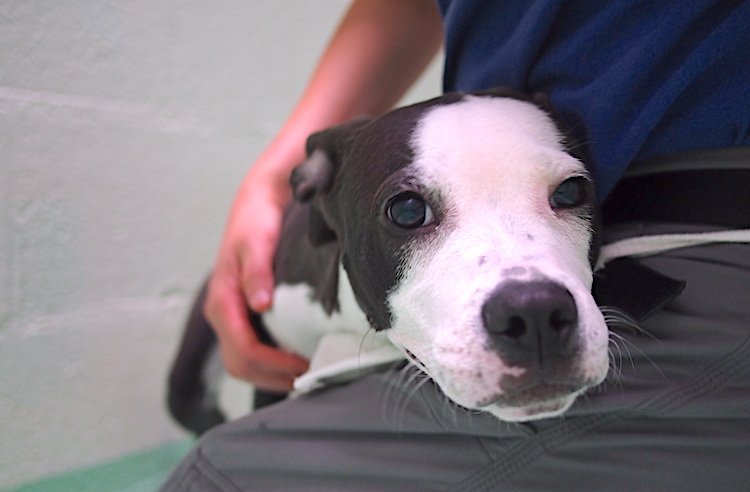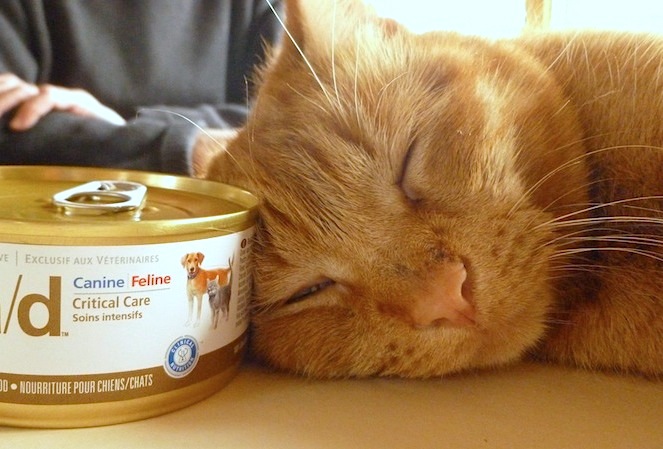How I’m Managing a Jealous Cat in My Multi-Cat Home
Here are a few things you can do to curb unwanted cat behaviors.

Petful may earn a commission if you click on our links and make a purchase. This comes at no extra cost to you and helps us continue providing trusted pet product reviews.
Solstice, my ruddy Abyssinian, is out of sorts these days. There are still a couple of kittens hanging around, waiting on their new homes, and they irritate the heck out of her.
Solstice is lovable but high-strung and has a jealous streak wider than her body. She makes a point of snarling and hissing at the kittens if they so much as look at her.
This is the kind of scenario that those of us with multi-cat households deal with daily. It’s an ever-shifting landscape, and we never know what’s going to pop up.
- Common triggers for feline anxiety include shifts in daily routine, the arrival of new pets or family members, or changes in their surroundings.
- Cats don’t feel jealousy in the same way people do; their reactions are more often linked to anxiety.
- You can ease this anxiety by giving your cat extra attention, ensuring they have their own safe space, and gradually helping them adjust to new situations.
Don’t Guess When It Comes To Your Pet’s Care


Don’t Guess When It Comes To Your Pet’s Care
Why Do Cats Get Jealous?
Cats can show jealousy because they feel threatened when their bond with their owner is challenged or their territory is disrupted. Their natural instincts to protect resources and relationships can cause them to react emotionally when changes occur in their environment.
Cats may get jealous due to:
- Their territorial nature, wanting to maintain control over their space and owner.
- A need for attention, feeling insecure when it is redirected to others like new pets or people.
- Changes in routine, household dynamics, or new additions that cause stress or anxiety.
- Competition for resources such as food, toys, or affection.
Jealousy in cats often manifests as behaviors like hissing, growling, increased vocalization, blocking access, or attention-seeking actions. Managing jealousy involves giving cats consistent attention, slow introductions to new pets or people, and creating separate safe spaces for each cat.
How Cats Show Jealousy
A number of cats living together aren’t so very different from a number of people living together. They hang out together, argue and make up. Sometimes 2 cats start out loathing each other. Then, suddenly and inexplicably, they call a truce.
They also can get jealous of one another. As John Bradshaw states in his book Cat Sense.
“All that jealousy requires is that the cat perceive that another cat is getting more of something than it should,”
Many years ago, my 3-legged Siamese, Christy, used to chase another female cat out of my parents’ backyard and down the field. She was so fueled by jealous rage that she completely forgot she was literally a paw short. And I’ve seen cats deliberately spray pet beds and toys that their housemates liked.
Not all cats show jealousy in the same way, of course. Some “react by swatting, growling or hissing as they encounter their new ‘rivals,’” Naomi Millburn notes:
“Other cats aren’t as direct in their approaches. More reserved felines might ignore their meals or hide away from everyone. They might display unusually clingy behavior, too.”
Giving the jealous cat extra attention and maintaining his favorite routines goes a long way toward making him happy, she adds. Keeping the new cat or kitten away from his toys and sleeping places also helps.
Sometimes a cat will start acting agitated or aggressive because he sees you fussing over his housemate. If that happens, says cat rescuer Pamela Merritt:
“we must continue our attention to the other…while verbally reassuring the cat that we still love them. We wait for a point when the cat is not showing bad behavior to transfer our attention to them.”
How a Jealous Cat Shows Itself
A jealous cat may display certain behaviors to express discomfort or insecurity when feeling threatened or ignored. Key signs a jealous cat might show include:
- Hissing, growling, swatting, or scratching at objects, animals, or people they see as rivals.
- Physically pushing between their owner and the source of jealousy, such as sitting on laps or blocking access.
- Destructive actions like chewing furniture, knocking over items, or shredding household objects.
- Marking territory outside the litter box or spraying to claim spaces important to them.
- Increased hiding, vocalizing, or clingy behavior as a way to cope with jealousy or stress.
These behaviors are a cat’s way of trying to control their environment and maintain their status and resources.

Getting the Balance Right
The more cats involved, the trickier keeping the balance becomes. A new addition can upset that balance if you don’t handle it carefully.
I favor giving the established cats a large chunk of attention. Don’t ignore the new guy or gal — that would be unkind and stupid — but make sure the others know their place is secure.
Here are a few things you can do to make the transition easier:
Keep Up the Rituals
As Millburn points out, make a point of keeping up with them as much as possible. Set aside regular playtimes. One fishing toy isn’t going to cut it in a multi-cat household. Somebody will hog it, and the others will get left out. So go for 2.
Grooming can also help you give each of your cats some one-on-one time.
Spread the Love
Set up more than one feeding station. “Don’t ask cats to share one community food bowl,” advises cat behaviorist Pam Johnson-Bennett. “That can become an invitation to intimidation if one cat bullies another in an attempt to be the first one (or the only one) at the dinner plate.”
Likewise, have litter boxes scattered throughout the house.
Watch the tension brew in the background as one cat gets more attention than the other:
Best Toys to Keep Your Jealous Cat Happy
A jealous cat may act out when feeling ignored or bored. Providing engaging toys helps channel their energy positively and keeps them mentally and physically active. Toys that mimic hunting or encourage interactive play satisfy natural instincts and reduce jealousy-driven behaviors. Below, top picks for each type of toy will help keep a jealous cat entertained and happy.
- Interactive wand toys: NOWFRESH Cat Wand Toy Set
- Pom pom balls for solo play: SunGrow Cat Pom Pom Balls
- Puzzle feeders that challenge their mind: Catstages Kitty Slow Feeder
- Catnip-filled soft toys: Fashion’s Talk 18 Piece Plush Catnip-Filled Mice Cat Toys
Getaway Places
In Mary Calhoun’s The House of Thirty Cats, Miss Tabitha Henshaw has a room set aside just for the cats.“There are so many cats here,” she tells her young friend Sarah, “they need a place to be alone sometimes.”
Petful may earn a commission if you click on our links and make a purchase. This comes at no extra cost to you and helps us continue providing trusted pet product reviews.
It’s a good idea. Cat rooms, catios and enclosures can help alleviate the tensions in a multi-cat home.
My cats don’t have an enclosure or even a room all their own here. But they’ve found their own nooks and niches. For Fey and Violet, it’s the study; for Moonlight, it’s a shelf full of old quilts in the basement. But it could also be a special chair, a cat bed or a condo tucked away in a quiet spot.
Solstice and I are still working on this one. She hops up to join me whenever I sit in a particular chair upstairs. Her eyes close, and her tension immediately falls away. The kitten intruders have ceased to exist — for a while, at least — and she is utterly blissful.
Frequently Asked Questions (FAQ)
Is my cat jealous of my other cat?
A jealous cat may show signs like hissing, swatting, or blocking access to their owner when they feel another cat is receiving more attention or resources.
How to deal with a jealous cat?
To deal with a jealous cat, provide extra attention, maintain routines, use interactive toys, and gradually introduce new pets while ensuring each cat has separate spaces.
What are signs of a jealous cat?
Signs of a jealous cat include aggression such as hissing and swatting, attention-seeking behavior, destructive actions, marking territory outside the litter box, and increased vocalizing or hiding.
References:
- ASPCA on Cat Aggression and Jealousy
- Veterinary guide on feline jealousy and behavior
- Overview of cat jealousy behaviors
- Domestic cats’ reactions to their owner and an unknown social object
- Domestic Cats’ Reactions to Their Owners Research Paper
- Do Cats Get Jealous?
- Do Cats Get Jealous? Exploring Feline Emotions and Behaviors
- Emotion Recognition in Cats


